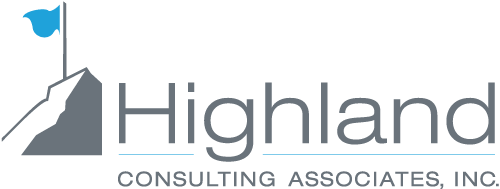SCHOOLED: The SECURE Act Passed the House with Flying Colors. Why it’s Failing in the Senate. (And why that matters.)

On May 23rd, in a blue moon, bi-partisan, super-majority effort, the House passed a bill intended to encourage retirement savings. It appeared to be that simple. Even elementary. Given the passage of the bill by a vote of 417 to 3, the Setting Every Community Up for Retirement Enhancement (SECURE) Act, seemed a sure thing for quick approval in the Senate.
But…Not. So. Fast. The bill has been suspended in the Senate due to “holds” placed by several Republican senators which have stalled its expedited passage under “unanimous consent” and, instead, re-routed it through committee consideration and a more typical schedule of floor debates and votes. And why would Senator Ted Kruz (among others) object to the bill?
The CliffsNotes version on the Senator Cruz hold is that the original Secure Act included a provision allowing homeschoolers the opportunity to withdraw 529 funds for purposes including home education, apprenticeships, student loan expenses and education support for students with disabilities. That provision was stripped from the bill in the eleventh hour by the House Rules Committee in response to teachers’ union pressure. Ted Cruz for one, a champion of home schooling, refused to consent to the Secure Act with that provision removed. And so, retirement savers and the first bill of its kind since the Pension Protection Act of 2006 have been held back (for the foreseeable future and some say quite possibly into 2020) while the Senate takes its summer recess, later returning to take up legislative business that may be more pertinent to their 2020 election priorities. But first, a primer.
What’s in the Secure Act?
While there are a few shadows cast by the Secure Act, for the most part, the bill is saver- and plan-sponsor friendly, including these summarized provisions to:
- Allow Penalty-free Withdrawals from Retirement Plans for Birth and Adoption Expenses. (Why wouldn’t we? It caps the withdrawal at $5,000.)
- Increase Mandatory Distributions Age. Under current law, participants must begin taking retirement plan distributions at age 70 ½. The age 70 ½ was first applied in the retirement plan context in the early 1960s and has never been adjusted to account for longer life expectancy. The bill increases the required minimum distribution age from 70 ½ to 72. (That makes sense. Seniors, keep on keeping on!)
- Repeal the Maximum Age for Traditional IRA Contributions. This is to say, contributions to a traditional IRAs by those 70½ or older would be allowed. As Americans live longer, an increasing number continue employment beyond traditional retirement age. (By all means. Seniors, keep saving!)
- Expand Retirement Savings by Increasing the Auto Enrollment Safe Harbor Cap. Increasing the cap on automatic escalation of employee deferrals from 10 to 15 percent of employee in an automatic enrollment safe harbor plan. (Some have called this a brilliant way to overcome retirement savings inertia.)
- Simplify Safe Harbor 401(k) Rules. Changing the non-elective contribution 401(k) safe harbor to provide greater flexibility, improve employee protection and facilitate plan adoption. (Simplify? The answer is always, yes.)
- Increase Credit Limitation for Small Employer Pension Plan Start-Up Costs. Increasing the credit for plan start-up costs to make it more affordable for small businesses to set up retirement plans. (Incentivize? Yes.)
- Provide Small Employer Automatic Enrollment Credit. Increasing employee participation savings rates with a new tax credit of up to $500 per year to employers for new section 401(k) plans and SIMPLE IRA plans that include automatic enrollment. (Ditto.)
- Treat Certain Taxable Non-Tuition Fellowship and Stipend Payments as Compensation for IRA Purposes. Taking such amounts into account for IRA contribution purposes, enabling these students to begin and build retirement savings. (Let’s help some of our brightest citizens become savvy savers.)
- Prohibit Qualified Employer Plans from Making Loans through Credit Cards. This change will ensure that plan loans are not used for routine or small purchases, thereby preserving retirement savings. (Making the withdrawal transaction more difficult may dissuade plan participants from casual withdrawals, but the heart of the issue is educating savers on the opportunity costs of borrowing from retirement accounts.)
- Allow Long-term Part-time Workers to Participate in 401(k) Plans Under current law, employers generally may exclude part-time employees (employees who work less than 1,000 hours per year) when providing a DC plan to their employees. The bill will require employers maintaining a 401(k) plan to have a dual eligibility requirement under which an employee must complete either a one year of service requirement (with the 1,000-hour rule) or three consecutive years of service where the employee completes at least 500 hours of service. (This may be a valuable hand-up to 27 million part-time workers, 64% of whom are women, balancing work with family care. Administering it could be a challenge.)
- Combine Annual Reports for Group of Plans. The legislation directs the IRS and DOL to effectuate the filing of a consolidated Form 5500 for similar plans. (To be eligible, DC plans must have the same trustees, named fiduciaries, administrator, plan year, and investments or investment options. More simplification? Yes.)
- Allow Fiduciary Safe Harbor for Selection of Lifetime Income Provider. The Act offers a safe harbor for plan fiduciaries electing to include annuity options. Specifically, the safe harbor would protect fiduciaries when selecting annuity providers from liability due to the insurer’s inability to fulfill its financial obligations. (To benefit from the protection, fiduciaries would need to ensure that the chosen insurance provider meets certain requirements including a thorough search process, obtaining certain written representations from the insurer, and also monitoring the suitability of the insurer and annuity product with respect to the plan. This is another situation where an advisor with nothing to gain from product sales is the best assurance of impartial advice on complicated plan offerings. Put another way, the fox isn’t the best candidate for guarding the hen house—or the nest egg.)
- Modify the Required Minimum Distribution Rule. Under the proposed act, only the surviving spouse of the IRA owner, disabled or chronically ill individuals, or minor children of the IRA owner will be allowed to “stretch” the IRA distributions over their own expected lifetimes. Every other beneficiary will have to take distributions within 10 years of the IRA owner’s death, thereby increasing their tax liability on the inherited distribution. The effect of this is to limit the tax benefit of the IRA, which, to-date, has been stretched beyond the lifespan of the original owner, typically to the next generation or beyond. (This provision certainly impacts estate planners and takes a tool from their toolbox, making tax-advantaged Roth IRAs more attractive. Many suggest this favorable tax benefit was always intended for the employee’s or retiree’s spouse, not his heirs.)
- Allow open Multiple Employer Plans (MEPs) for small businesses. This permits plans offered by businesses that don’t share the same geographic area or a common trade, industry or profession to be administered by a “pooled plan provider,” such as a financial services firm. Unaffiliated employers could pool workers and their retirement savings under one DC plan, with hopes of easing fiduciary requirements, administrative burdens, and costs. (The bill protects companies in MEPs from penalties if other members violate fiduciary rules. Questions remain, though, over the lack of specific language on who could serve as open MEP fiduciary sponsors.)
That sums up the most impactful provisions of the plan, all of which seem straightforward, and rooted in common sense.
So What’s the Problem?
Here’s the nugget that seems to have turned an easy legislative “pass” to an “incomplete” which may end up as a Congressional fail. The original Secure Act which had been unanimously approved by the bi-partisan House Ways and Means Committee included this provision, arguably unrelated to retirement savings:
- Expansion of Section 529 Plans. The legislation expands 529 education savings accounts to cover costs associated with registered apprenticeships; homeschooling; up to $10,000 of qualified student loan repayments (including those for siblings); and private elementary, secondary, or religious schools.
This measure irritated the teachers unions (organized under The National Coalition for Public Education) who rallied together and, in a letter to Congress, asserted:
The likely outcome of the expansions, therefore, is that they will provide a new tax break for more affluent families who already enroll their children in private schools or homeschools. Rather than giving up millions of dollars in revenue at the federal and state levels to provide tax breaks to the wealthy, Congress should be allocating more funding for our public schools.
We urge you to oppose any effort to add language to the SECURE Act that would open up 529 accounts for contributions covering expenses associated with private elementary and secondary education or homeschooling.
Speaker Pelosi and the House Rules Committee acted on the unions’ urging and struck the 529 provision from the bill just before it went to vote on the House floor. On principle, Senator Cruz of Texas (along with several other senators who had their own axes to grind), effectively tabled the bill when it arrived in the Senate.
No one seems to dispute that the Secure Act is the greatest legislative advance in bolstering retirement savings since the Pension Protection Act of 2006. The squabbling between our teachers unions and lawmakers over the application of education savings is effectively halting legislation with the potential to benefit millions of savers—savers who face an ever-widening retirement savings gap.
Some policy experts think certain provisions of the Secure Act could be affixed to one of 12 must-pass spending bills that Congress will take up this fall. Meanwhile, plan sponsors and retirement savers wait. And wait some more—all of which suggests that what we need to be teaching our children now, in our public schools or in our homes, is how to support their parents in their old age.
UPDATE November 2019 – Secure Act Update: Still Stuck in the Senate
Despite nearly unanimous passage in the U.S. House and overwhelming bipartisan support, the Setting Every Community Up for Retirement Enhancement (SECURE) Act of 2019 remains stuck in the Senate. The SECURE Act’s 29 provisions intended to improve American’s retirement readiness has only a 3 percent chance of passage in 2019 according to GovTrack.us. Some believe that the bill could still be tacked on to an “omnibus” government funding bill at year-end, but that seems more unlikely with only three weeks remaining on the legislative calendar before the Senate’s holiday recess. What once seemed an easy and obvious win for American workers with overwhelming bipartisan support has been thwarted by Washington’s partisan politics, serving no one, least of all those the act was designed to help.
Highland is a registered investment adviser. Information presented is for educational purposes only and does not intend to make an offer or solicitation for the sale or purchase of any specific securities, investments, or investment strategies. Investments involve risk and unless otherwise stated, are not guaranteed. Be sure to first consult with a qualified financial adviser and/or tax professional before implementing any strategy discussed herein. Past performance is not indicative of future performance.



